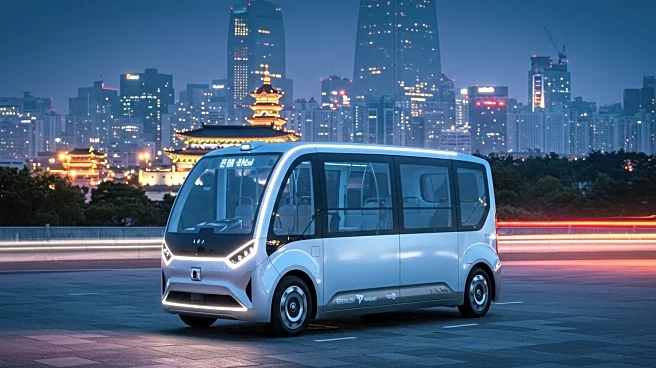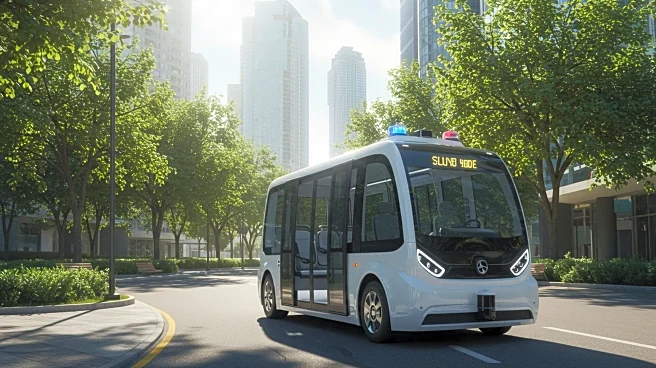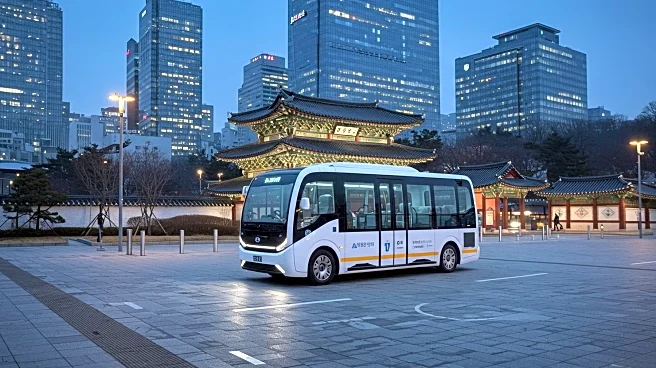What is the story about?
What's Happening?
The Seoul Metropolitan Government has announced the launch of South Korea's first self-driving shuttle service, set to begin operations in late September. The initiative will feature two 11-seater shuttles operating on a 4.8km circular route in central Seoul, from Cheonggye Plaza to Cheonggye 5-ga near Gwangjang Market. The shuttles will run on weekdays from 10am to 5pm, but will not operate on weekends and public holidays due to car-free road designations. Initially, the service will be free, with plans to transition to a paid model similar to other city buses. The shuttles are equipped with U-shaped seats, a large information screen, and a wheelchair lift, and will have a safety staff member onboard. The city government aims to enhance public transportation and boost local tourism and economy through this initiative.
Why It's Important?
The introduction of self-driving shuttles in Seoul represents a significant advancement in public transportation technology, potentially setting a precedent for other cities in South Korea and beyond. This initiative is expected to enhance the tourism experience around Cheonggyecheon, a popular destination, thereby revitalizing the local economy. The move also reflects a broader trend towards autonomous vehicle technology, which could lead to increased efficiency and reduced traffic congestion in urban areas. As cities worldwide grapple with transportation challenges, Seoul's approach may offer valuable insights into integrating autonomous vehicles into existing infrastructure.
What's Next?
The Seoul Metropolitan Government plans to conduct safety verification tests during the trial run, which began on August 22, before the official launch in September. Future enhancements may include extending service hours to nighttime and expanding the shuttle routes. The success of this initiative could influence other cities to adopt similar technologies, potentially leading to widespread changes in urban transportation systems. Stakeholders, including technology developers and urban planners, will likely monitor the outcomes closely to assess the feasibility and impact of autonomous shuttles on public transit.
Beyond the Headlines
The deployment of self-driving shuttles raises important ethical and legal considerations, particularly regarding safety and liability in the event of accidents. As autonomous technology becomes more prevalent, regulatory frameworks will need to evolve to address these issues. Additionally, the cultural acceptance of driverless vehicles may vary, influencing public perception and adoption rates. Long-term, this development could contribute to shifts in employment patterns within the transportation sector, as traditional driving roles may diminish.
AI Generated Content
Do you find this article useful?











